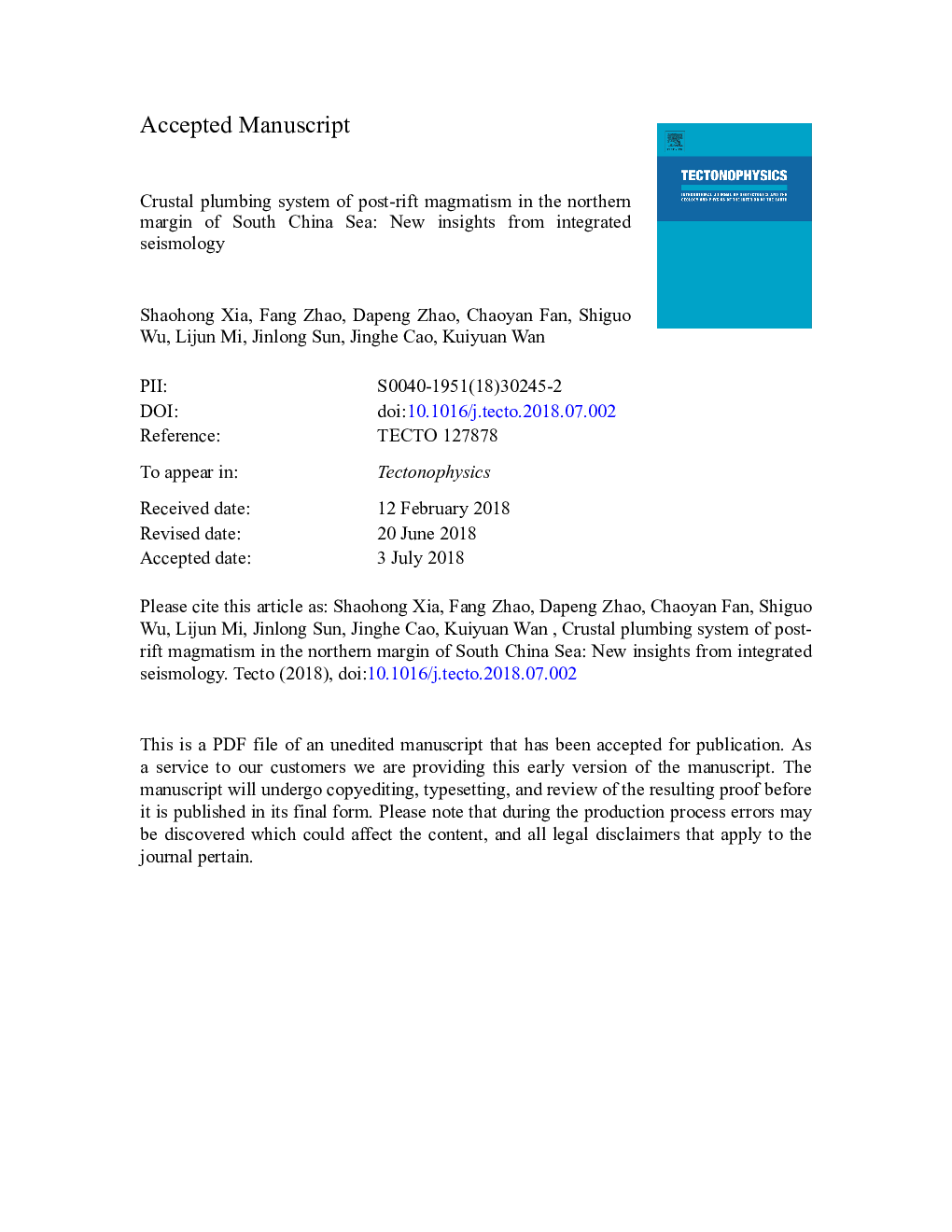| Article ID | Journal | Published Year | Pages | File Type |
|---|---|---|---|---|
| 8908609 | Tectonophysics | 2018 | 42 Pages |
Abstract
The origin and evolution of magmatism in rifting margins are a fundamental geological subject, and remain the focus of intense studies. Unlike the classical magma-poor and magma-rich rifting margins, the northern margin of the South China Sea (SCS) exhibits a strong post-rift magmatism, but the evolution and mechanism of this behavior are still poorly understood. In this work we investigate the detailed structural features of the post-rift magmatism in the crust of the SCS northern margin. Our analysis is based on wide-angle and multichannel reflection seismic data, combined with previous seismological results. Our results show a wide distribution of shallow igneous sills and intrusions. These features are spatially and tectonically linked to the lower crustal high-velocity bodies (HVBs) and submarine volcanism, indicating a causative connection between the three features. Considering the existence of an obvious low-velocity branch of the Hainan plume in the northern SCS and uplift of the lithosphere-asthenosphere boundary, we propose that the HVBs reflect consolidated mafic intrusions which formed the lower crustal reservoirs feeding the overlying igneous sills and intrusions. In the SCS northern margin where abundant extensional and detachment faults can act as magmatic channels, such a dynamic process might cause post-rift volcanism. Our results suggest that the crustal magmatic system of post-rift volcanism has a multilevel upward migration mode, and the HVBs in the lower crust could be the product of post-rift magmatism, further indicating that the SCS northern margin had a magma-poor property at the rifting phase but has undergone a strong magmatic rejuvenation by the subsequent mantle plume.
Keywords
Related Topics
Physical Sciences and Engineering
Earth and Planetary Sciences
Earth-Surface Processes
Authors
Shaohong Xia, Fang Zhao, Dapeng Zhao, Chaoyan Fan, Shiguo Wu, Lijun Mi, Jinlong Sun, Jinghe Cao, Kuiyuan Wan,
